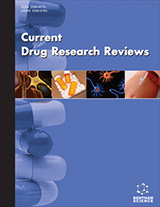
Abstract
Background: Diabetic cardiomyopathy is one of the leading causes of mortality for people with diabetes worldwide. The majority of the formalistic alterations in the heart associated with diabetic cardiomyopathy have been found to be primarily caused by the ongoing oxidative stress brought on by hyperglycemia, which leads to the dysfunctional reactions of apoptosis and inflammation. Liraglutide, a long-acting counterpart of glucagon-like peptide-1, has been demonstrated to have a number of therapeutic applications in medicine and other biological processes.
Methods: The PubMed database was searched using the terms liraglutide, DCM, and all associated inflammatory markers.
Results: There has been a lot of research on liraglutide's potential to protect the heart from cardiomyopathy brought on by diabetes. Liraglutide's therapeutic actions as an antioxidant, antihyperglycemic, anti-apoptotic, and anti-inflammatory medicine may help to lessen diabetic cardiomyopathy.
Conclusion: The most recent studies on the effects of liraglutide therapy on DCM are presented in this review, along with an explanation of the underlying mechanisms.
Keywords: Glucagon-like peptide-1, liraglutide, oxidative stress, systolic dysfunction, diastolic dysfunction, diabetic cardiomyopathy.
[http://dx.doi.org/10.1016/j.diabres.2021.109119] [PMID: 34879977]
[http://dx.doi.org/10.1186/s12933-018-0728-6] [PMID: 29884191]
[http://dx.doi.org/10.1161/CIRCRESAHA.117.311586] [PMID: 29449364]
[http://dx.doi.org/10.1016/j.hfc.2019.02.003] [PMID: 31079692]
[http://dx.doi.org/10.1186/s12933-017-0506-x] [PMID: 28231848]
[http://dx.doi.org/10.3389/fphys.2018.01514] [PMID: 30425649]
[http://dx.doi.org/10.1161/CIRCRESAHA.118.311371] [PMID: 30605420]
[http://dx.doi.org/10.1007/s00125-013-2904-2] [PMID: 23613085]
[http://dx.doi.org/10.1155/2020/1762164] [PMID: 32190049]
[http://dx.doi.org/10.3390/ph15060740] [PMID: 35745659]
[http://dx.doi.org/10.3390/cells11162587] [PMID: 36010663]
[http://dx.doi.org/10.2147/DDDT.S400249] [PMID: 36936522]
[http://dx.doi.org/10.1161/CIRCULATIONAHA.107.739938] [PMID: 18427132]
[http://dx.doi.org/10.1161/CIRCHEARTFAILURE.108.766402] [PMID: 19727407]
[http://dx.doi.org/10.1007/s00125-011-2069-9] [PMID: 21340625]
[http://dx.doi.org/10.1007/s10741-011-9257-z] [PMID: 21626163]
[http://dx.doi.org/10.2174/1381612811319320005] [PMID: 23448484]
[http://dx.doi.org/10.1016/j.ejphar.2016.11.014] [PMID: 27864105]
[http://dx.doi.org/10.1155/2018/7845681]
[http://dx.doi.org/10.3390/ijms21207432] [PMID: 33050121]
[http://dx.doi.org/10.1161/CIRCRESAHA.110.217117] [PMID: 20431074]
[http://dx.doi.org/10.1007/s10741-017-9634-3] [PMID: 28702857]
[http://dx.doi.org/10.3390/ijms20092164] [PMID: 31052420]
[http://dx.doi.org/10.3390/ijms17071037] [PMID: 27376265]
[http://dx.doi.org/10.1016/j.freeradbiomed.2015.11.013] [PMID: 26577173]
[http://dx.doi.org/10.1161/CIRCRESAHA.116.303577] [PMID: 27340270]
[http://dx.doi.org/10.1161/CIRCULATIONAHA.114.008788] [PMID: 25779542]
[http://dx.doi.org/10.1096/fj.201700109R] [PMID: 28642328]
[http://dx.doi.org/10.1007/s12035-018-1184-8] [PMID: 29909454]
[http://dx.doi.org/10.1111/j.1600-065X.2012.01093.x] [PMID: 22435553]
[http://dx.doi.org/10.1161/01.CIR.0000012748.58444.08] [PMID: 11940543]
[http://dx.doi.org/10.1016/j.cmet.2010.12.008] [PMID: 21195345]
[http://dx.doi.org/10.1038/s41419-017-0135-z] [PMID: 29371661]
[http://dx.doi.org/10.1038/nrendo.2015.216] [PMID: 26678809]
[http://dx.doi.org/10.1536/ihj.18-476] [PMID: 30971629]
[http://dx.doi.org/10.4049/jimmunol.175.5.2948] [PMID: 16116181]
[http://dx.doi.org/10.3389/fphar.2020.00042] [PMID: 32116717]
[http://dx.doi.org/10.1002/cbin.11137] [PMID: 30958602]
[http://dx.doi.org/10.1002/jbt.22629] [PMID: 32935389]
[http://dx.doi.org/10.1002/jcb.28229] [PMID: 30506923]
[http://dx.doi.org/10.1016/j.jacc.2010.07.033] [PMID: 21144973]
[http://dx.doi.org/10.4238/2015.December.21.5] [PMID: 26782377]
[http://dx.doi.org/10.1080/09168451.2020.1815170] [PMID: 32892714]
[http://dx.doi.org/10.14814/phy2.15462] [PMID: 36117310]
[http://dx.doi.org/10.1111/dom.12593] [PMID: 26500045]
[http://dx.doi.org/10.1210/me.2002-0306] [PMID: 12554744]
[http://dx.doi.org/10.1038/379069a0] [PMID: 8538742]
[http://dx.doi.org/10.1172/JCI25764] [PMID: 16322793]
[http://dx.doi.org/10.1038/361362a0] [PMID: 8381211]
[PMID: 8721980]
[http://dx.doi.org/10.2337/diab.44.9.1126] [PMID: 7657039]
[http://dx.doi.org/10.1074/jbc.271.38.23222] [PMID: 8798518]
[http://dx.doi.org/10.1210/en.2004-0015] [PMID: 15044356]
[http://dx.doi.org/10.2337/diabetes.52.2.365] [PMID: 12540609]
[http://dx.doi.org/10.2337/diabetes.52.1.124] [PMID: 12502502]
[http://dx.doi.org/10.1677/jme.0.0290347] [PMID: 12459036]
[http://dx.doi.org/10.1210/en.2002-220405] [PMID: 12399437]
[http://dx.doi.org/10.1016/j.phrs.2018.03.004] [PMID: 29530599]
[http://dx.doi.org/10.4103/2230-8210.77571] [PMID: 21584160]
[http://dx.doi.org/10.1016/j.biopha.2018.08.088] [PMID: 30372907]
[http://dx.doi.org/10.1586/17446651.2016.1113129] [PMID: 27335581]
[PMID: 35096293]
[http://dx.doi.org/10.1016/j.atherosclerosis.2013.10.025] [PMID: 24401231]
[http://dx.doi.org/10.3892/mmr.2018.9180] [PMID: 29916537]
[http://dx.doi.org/10.1080/21655979.2022.2051858] [PMID: 35311455]
[http://dx.doi.org/10.1186/s12974-018-1370-7] [PMID: 30518432]
[http://dx.doi.org/10.3748/wjg.v20.i40.14821] [PMID: 25356042]
[http://dx.doi.org/10.3389/fphar.2019.00537] [PMID: 31231210]
[http://dx.doi.org/10.1038/s41598-020-74912-1] [PMID: 33093510]
[http://dx.doi.org/10.1186/s12944-017-0609-0] [PMID: 29197387]
[http://dx.doi.org/10.3389/fcell.2021.634900] [PMID: 33718370]
[http://dx.doi.org/10.1186/s12933-019-0857-6] [PMID: 31039778]
[http://dx.doi.org/10.3897/pharmacia.70.e96975]
[http://dx.doi.org/10.1038/s41598-021-90191-w] [PMID: 34012064]
[http://dx.doi.org/10.1016/j.jacbts.2018.09.004] [PMID: 30623143]
[http://dx.doi.org/10.3390/ijms20071599] [PMID: 30935055]
[http://dx.doi.org/10.3390/ijms22031177] [PMID: 33503985]
[http://dx.doi.org/10.1111/eci.13807] [PMID: 35488737]
[http://dx.doi.org/10.1016/j.lfs.2021.119374] [PMID: 33745896]
[http://dx.doi.org/10.1155/2019/8905917] [PMID: 31886288]
[http://dx.doi.org/10.1152/ajpendo.00511.2018] [PMID: 30860874]
[http://dx.doi.org/10.1177/1479164115605000] [PMID: 26408644]
[http://dx.doi.org/10.1007/s12265-020-09984-5] [PMID: 32239434]
[http://dx.doi.org/10.1111/bph.13449] [PMID: 26845648]
[http://dx.doi.org/10.1016/j.bbrc.2015.09.179] [PMID: 26519882]
[http://dx.doi.org/10.1016/j.ando.2013.02.003] [PMID: 23582850]
[http://dx.doi.org/10.1172/JCI5001] [PMID: 9916137]
[http://dx.doi.org/10.1038/12631] [PMID: 10471495]
[http://dx.doi.org/10.1074/jbc.M114.554162] [PMID: 24652289]
[http://dx.doi.org/10.1186/s13098-016-0138-4] [PMID: 26937254]
[http://dx.doi.org/10.1002/jcb.25065] [PMID: 25536154]
 17
17 1
1



























